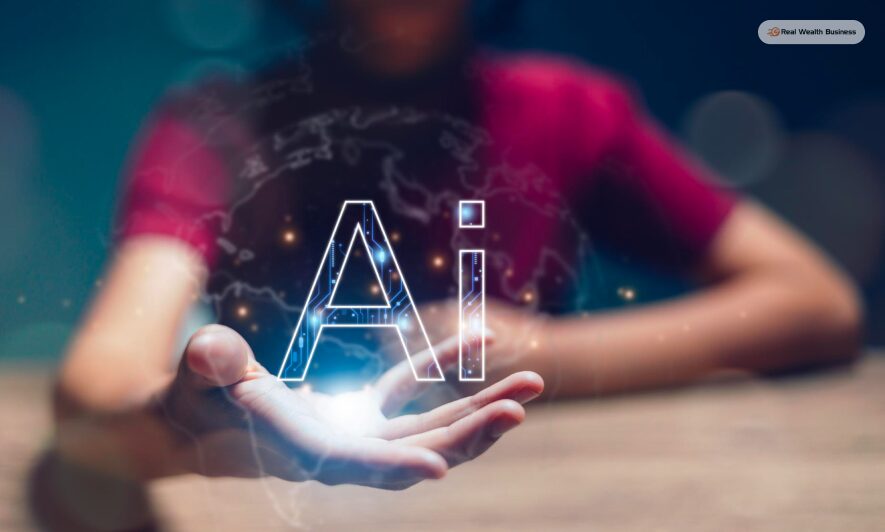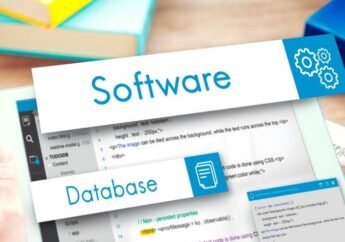How AI & ML are Revolutionizing Product Quality Control/AI in Quality Assurance in IT & Manufacturing?
by Shahnawaz Alam Technology Published on: 30 March 2024 Last Updated on: 05 June 2024

As the world moves deeper inside the technology jungle, more technologies emerge. The tech industry is evolving, and so is the process. Artificial intelligence quality assurance tools and programs are out there, changing the innovation of new tech as we speak. AI incorporation in product testing has already given many companies enough competitive edge.
Product innovation has many steps throughout the process. It starts with development and testing and ends with product launch. But not anymore. AI itself is a revolution that revolutionizes so many other spaces.
The QA teams of different companies are now shifting from the more time-consuming manual testing to automated testing. Go through this article as we trace the shift in between.
Read More: What Can You Make With A Cricut? 10 Ideas To Explore Using Cricut
AI & Quality Assurance: Here’s How AI Gets it Done?
AI can improve the process of quality assurance in creating, developing, and ensuring product quality. Of course, the use of cognitive skills helps ensure product quality. But AI makes it easier and faster.
Natural Language Processing (NLP)
NLP, or natural language processing, makes it easy for humans and machines to communicate. NLP can find workarounds between all those language errors and inputs and interpret human language. It can understand any human input written in plain language and convert them into automation scripts.
Learn & Improve
Machine learning as part of AI allows it to learn independently without any user providing learning inputs. So, the product testing team can use AI for QA and create different experiences from which the AI can learn. AI can learn throughout the testing sessions it has with the users. The testing sessions itself will work as a process for the AI to learn.
Computer Vision
This feature of AI is also a great feature that allows AI to learn. It can use visual data to understand and detect the anomalies within.
All these features will help the QA teams of any company create a product that’s flawless and free of any bugs. The future of testing and QA looks automated and more efficient with AI. The testing industry used to be Test and Automation based, and now it is Autonomous Testing Software.
However, as we strive to build an autonomous testing world, testing works will be taken over by AI. It will be completely managed by ML/AI and eliminate the rigorous need for human intervention.
Artificial Intelligence Quality Assurance Process: What Is It?
Various studies have proven that manual testing rests at the lowest position when it comes to autonomy. There is a lack of automation because it is fully driven by humans.
However, artificial intelligence quality assurance tools help offload lots of the repetitive tasks of the testers and help them focus on more important tasks to complete the entire process as they want.
Computers, with full control over the testing process, provide the testers with lots of time to fast pace their entire projects and improve delivery time. Once shifted from manual testing methods, testers can unlock the potential of lots of benefits.
- AI helps drastically improve efficiency and speed.
- AI can save lots of operational costs and increase ROI for organizations.
- Ability to handle large volumes of test cases, leading to increased coverage.
- High scalability.
- Resource optimization.
- Opportunity for collecting more information for performing predictive analytics.
The Future of Automation Testing
There are more and more things you need to follow. There are more
Benefits of AI-led Quality Assurance
AI can be used during the QA process. But that’s just a simple use of AI. On the other hand, AI-led QA sessions are something else entirely. They help optimize, automate, and leverage the use of AI entirely.
Testers can integrate AI-enabled testing techniques at any point of the testing process or the STLC (Software Testing Life Cycle). They can help with test case creation, defect detection, and analysis. This approach also has another name, AI testing.
So, it is clear that there are several benefits to using AI for testing. Here are some benefits that you must know about —
1. Effortless Test Authoring
ChatGPT is a remarkable artificial intelligence. Developed and released by OpenAI, it is a remarkable language with a great IQ of 155. QA teams across the world have used it and leveraged its power to achieve effortless test authoring. The users simply have to give the chatbot detailed instructions about the test cases. The chatbot should provide them with the exact test case they asked for.
But there is a little roadblock here. Chatbots can be more efficient and faster in terms of authoring test cases. Here are some ways the chatbots can improve its efficiency –
- Chatbots can use and decode natural language and turn them into test scripts.
- Building testing scenarios where the testers can easily adapt to certain testing needs.
- It can also generate test data according to certain requirement-based inputs.
2. Improved Consistency
Human testers should always be there to oversee the outcomes of tests from start to finish. But AI can take a certain amount of load off humans. It can also help mitigate certain human errors that would make the testing more subjective in nature. AI helps testers mitigate distractions, cognitive bias, and the potential to venture off the standardized path.
AI can help testers and product development teams stay consistent with their quality assurance part of the work. They can have an AI scan of the entire code to help them identify inconsistencies in the design. Even the users can train AI to follow certain parameters and formats to do such research and findings.
A great application of AI in the quality assurance part of testing is its capability to document findings. Users can tell AI to check codes and extract valuable details such as names, functions, descriptions, etc. It is possible to use this information and create comprehensive reports from the findings.
The best part is that you do not need to develop all these reports manually. You can let AI steer the wheel for you. It helps save time that testers would otherwise spend on documentation and report creation.
3. Using AI as an Assistant
The internet is, of course, a great source of information. However, AI helps testers access the right information at the right time. ChatGPT makes the understanding and research process for testers easy. Yes, there have been various incidents where AI-generated results have been put into question. But AI can definitely provide a good start to the testing process and to a product’s quality assurance.
Why is Manual Research Limited, and How can AI Improve it?
Human effort is needed. But, in many cases, some repetitive tasks need automation. This is for the betterment of the overall operations. AI can help humans improve the intricacies and lack of efficiency of testing tasks. Human testers are prone to fall prey to their own biases and execute human errors during the process.
AI, once implemented in quality assurance for testing, can help overcome certain human obstacles. Most importantly, it becomes easy to reduce the time attached to the testing process. It requires both time and labor to test, manage, execute test cases, document outcomes, and verify results.
With the growing level of complexity of the software, manual testing becomes more difficult. As a result, the testing period becomes pretty long. Regression testing becomes tedious when done manually.
As a crucial part of software testing, regression testing should not be counterproductive through manual labor. Also, companies are already spending too much on training new testers and trying to manage the testing environment.
Through automation, companies can automate and streamline tasks that are repetitive and require more resources.
Quality Control in Manufacturing
Quality control or quality assurance in the manufacturing industry means any product manufactured by any company needs to maintain certain quality standards based on selected parameters.
These parameters, standards, or quality control protocols might be self-imposed, or they can be requested by clients. Also, different external bodies like the ISO (International Organization for Standardization) make these quality standard protocols effective for different manufacturing companies.
This practice in the manufacturing industry was put in motion by someone named Dr. W. Edwards Deming. He published a work during the post-World War II period, which helped Japan turn around its economic condition.
Dr. Deming showed the idea of PDSA, which means the Plan Do Study Act cycle. It is a systematic process for gaining knowledge and learning for the constant improvement of a product, service, or service.
Here are the stages –
Plan – the first stage is to identify a goal or a purpose and develop a plan of action.
Do – Different components of the developed plan get implemented.
Study – The outcomes of the plan are monitored to check its validity.
Act – the stage of an act integrates discoveries learned throughout the entire cycle. It is used to reformulate a plan accordingly.
How Does AI Help in Quality Control in the Manufacturing Industry?
Here are different aspects of using AI to ensure quality control in the manufacturing industry –
Detecting Defects
AI can help detect any faults, damage, or anomalies within products during manufacturing. In fact, AI can do it more reliably and faster than human supervision or manual inspection. Even conventional machine vision systems are not as effective as AI systems.
It has deep learning algorithms to easily analyze images, videos, and sensor data derived from product lines. All these processes help with the detection of anomalies, flaws, and so on. AI can also use feedback and different historical data to help the process adapt to changing conditions.
Predictive Maintenance
AI can help with quality control in manufacturing by utilizing its predictive maintenance techniques. It facilitates reduced downtimes and fewer instances of equipment failures. It can help track the performance and health of different machinery and equipment, thereby keeping the entire chain of manufacturing functional and working.
Process Optimization
AI can help manufacturing companies optimize their processes. Companies can optimize different processes by analyzing inputs, outputs, and other variables of processes and find an optimal combination of different factors that help boost the desired business outcome.
AI helps accomplish it all by pulling data from different sources like machines, customers, products, etc. Then, it applies all the different optimization techniques like programming, genetic algorithms, and reinforcement learning to solve those complex problems. AI can also be used to improve and implement solutions to different processes in real-time. This is a neat way of using AI to improve quality, performance, and innovation.
Customer Feedback
Receiving, grouping, analyzing, and implementing insights derived from customer feedback is important for quality control. AI helps businesses build, maintain, and operate a proper customer feedback mechanism. It can help understand customer preferences, check their behaviors, act upon grievances, and monitor opinions.
AI uses NLP, sentiment analysis, text mining, etc., to derive insights from different vocal and textual feedback shared by customers. Its capability to analyze calls, texts, or reviews on company websites helps understand the requirements customers have. All the data analysis of customer feedback helps manufacturing companies improve their products and campaigns for quality control.
Read More: AI In PPC: Are Automated Ads Your Shortcut To Success?
Final Thoughts
Artificial intelligence quality assurance procedures have been very helpful for both IT and m manufacturing industries ever since they came into existence. Both in testing and manufacturing, AI helps with quality assurance and quality control. Hopefully, this article will provide you with the knowledge you are looking for.
Please share your feedback on the same. Thank you for reading.
For More Business Related Artilces Click Below!!







































































































